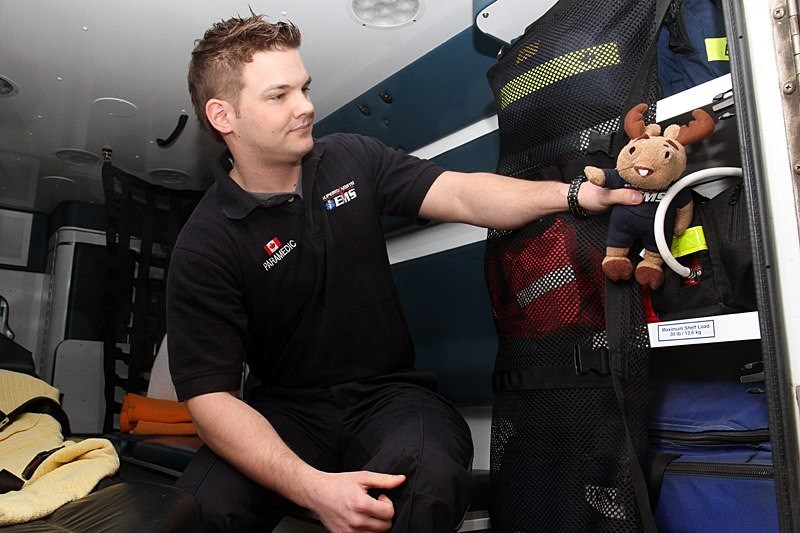When a six-year-old was struggling to breathe, paramedic Ryan Ross grabbed what at the time seemed like the most crucial piece of equipment in his kit -- a stuffed animal.
Superior North EMS has used the Moose Medic -- a small stuffed moose in a paramedic’s uniform -- for about a decade. The concept of using a stuffed animal to help treat children started in Manitouwadge, Ont., and later spread across Ontario.
Ross has been a paramedic almost as long as the cuddly moose. The 29-year-old father of two originally looked to other emergency services departments for potential career moves, but preferred how the paramedic combined sciences with field work in the community.
Although it doesn’t happen often, Ross usually responds to emergency calls that deal with children with the stuffed moose.
"One of the hardest things with pediatrics is if they’re sick, they’re very anxious," Ross says. "If we're able to give them something like that, they often calm down and make our job a lot easier.
“Trying to assess a three-year-old while they’re screaming and clinging to their mother is a lot harder to do, but if you give them the moose, more often than not you establish a little bit of trust.”
That one small animal can make a huge difference, he adds.
"I’m very happy to have it," he says. "It's probably one of the more useful tools we have for pediatrics. When we got them of course there was an adjustment period where you had to remember to grab it because it was a new thing. If you forgot and the child was in the hospital, you’d go back and bring one to him or her anyway.”
While his courses touched on pediatrics, Ross believes it is a field that’s difficult to train in.
He says the best training for a paramedic when it comes to pediatrics is having children.
“It’s not a super common call," he says. "Kids are often getting sick with colds, flus, and things like that but there are not really any traumas or emergency stuff thankfully. It’s more on the job thing. That moose is definitely a good tool for us.”
EMS chief Norm Gale says the cost to make and stock the moose is low so the stations always has some available when needed.
"It can also be used as a diagnostic tool," he says.
“A paramedic could be speaking to a scared, injured child you can use the Moose Medic to point to parts of the body and the Moose Medic actually becomes a vector for communications.”
